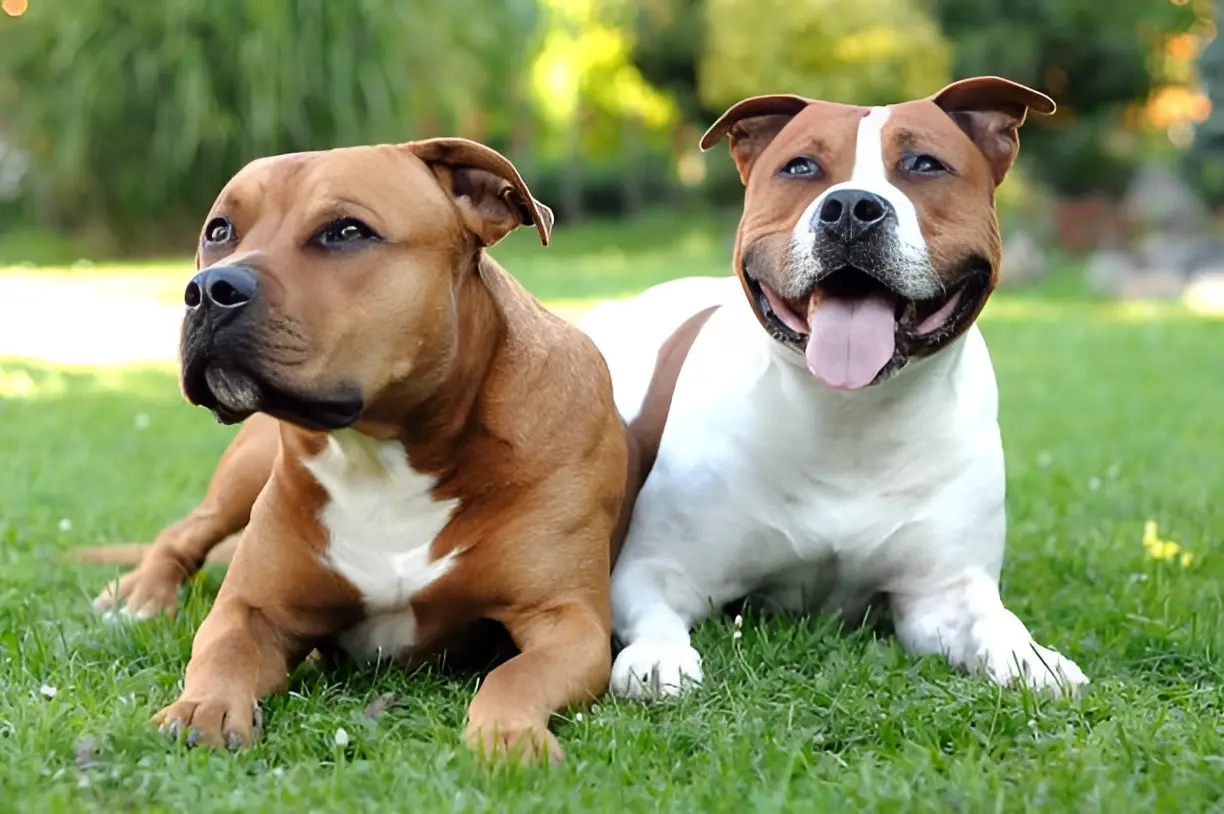Yes, two male Pitbulls can live together, but it requires careful management, training, and understanding of their behavior to ensure a harmonious household. Pitbulls are known for their strength, loyalty, and sometimes misunderstood reputation. When considering having two male Pitbulls live together, it’s essential to understand their unique needs and behaviors. This comprehensive guide will explore the factors that influence their compatibility, provide tips for successful cohabitation, and address common concerns.
Understanding Pitbull Behavior
Breed Characteristics: Pitbulls are a group of breeds that include the American Pit Bull Terrier, American Staffordshire Terrier, and Staffordshire Bull Terrier. They are known for their muscular build, high energy levels, and strong-willed nature.
Socialization: Proper socialization from a young age is crucial for Pitbulls. It helps them develop positive behaviors and reduces the likelihood of aggression towards other dogs.
Territorial Instincts: Male Pitbulls can be territorial, especially if they feel their space or resources are threatened. Understanding and managing these instincts is key to preventing conflicts.
Factors Influencing Compatibility
Individual Temperament: Each dog has a unique personality. Some male Pitbulls may be more dominant, while others are more submissive. Assessing their temperaments can help determine their compatibility.
Age and Maturity: Younger dogs are generally more adaptable and easier to socialize. Introducing two male Pitbulls at a young age can increase the chances of a successful relationship.
Neutering: Neutering can reduce aggressive tendencies and territorial behavior in male dogs. It is often recommended for households with multiple male dogs.
Previous Experiences: Dogs with positive experiences living with other dogs are more likely to adapt well to a multi-dog household. Conversely, dogs with a history of aggression may require more careful management.
Tips for Successful Cohabitation
Gradual Introduction: Introduce the dogs gradually in a neutral environment. Allow them to sniff and interact under supervision. Short, positive interactions can help build a foundation for a good relationship.
Separate Spaces: Provide each dog with their own space, including separate feeding areas, beds, and toys. This helps prevent resource guarding and reduces the likelihood of conflicts.
Supervised Playtime: Always supervise playtime, especially in the beginning. Monitor their interactions and intervene if necessary to prevent any aggressive behavior.
Positive Reinforcement: Use positive reinforcement to reward good behavior. Treats, praise, and affection can help reinforce positive interactions between the dogs.
Consistent Training: Consistent training is essential for managing behavior. Teach basic commands such as “sit,” “stay,” and “leave it” to help control their actions and prevent conflicts.
Exercise and Mental Stimulation: Ensure both dogs get plenty of exercise and mental stimulation. A tired dog is less likely to engage in aggressive behavior. Activities like walks, playtime, and puzzle toys can help keep them occupied.
Common Challenges and Solutions
Resource Guarding: Resource guarding can lead to conflicts between dogs. Feed the dogs separately and remove any high-value items that may trigger guarding behavior.
Dominance Issues: Dominance issues can arise between two male dogs. Establish yourself as the pack leader and enforce rules consistently. Avoid letting the dogs “fight it out” as this can escalate aggression.
Jealousy and Attention: Ensure both dogs receive equal attention and affection. Favoritism can lead to jealousy and conflicts. Spend individual time with each dog to strengthen your bond with them.
Health and Well-being: Regular veterinary check-ups are essential to monitor the health of both dogs. Health issues can affect behavior, so addressing any medical concerns promptly is crucial.
Conclusion
Two male Pitbulls can live together successfully with proper management, training, and understanding of their behavior. By assessing their individual temperaments, providing separate spaces, and using positive reinforcement, you can create a harmonious household. Remember, patience and consistency are key to fostering a positive relationship between your dogs.
The photo featured below the post headline is Credit: hamikus/istockphoto
I hope you find this post helpful and informative. If Yes’ feel free to share it with your friends!
Frequently Asked Questions
Can two male Pitbulls live together peacefully?
Yes, with proper management, training, and understanding of their behavior, two male Pitbulls can live together peacefully.
What should I do if my male Pitbulls start fighting?
If your dogs start fighting, separate them immediately and assess the situation. Identify triggers and work on training and management strategies to prevent future conflicts.
Is neutering necessary for two male Pitbulls to live together?
Neutering can reduce aggressive tendencies and territorial behavior, making it easier for two male Pitbulls to live together. It is often recommended for multi-dog households.
How can I prevent resource guarding between my male Pitbulls?
Feed the dogs separately and remove high-value items that may trigger guarding behavior. Provide each dog with their own space and resources.
What are the signs of dominance issues between male Pitbulls?
Signs of dominance issues include growling, snapping, and aggressive posturing. Establish yourself as the pack leader and enforce rules consistently to manage dominance behavior.

